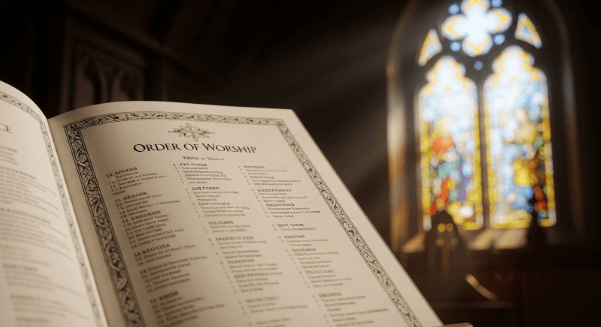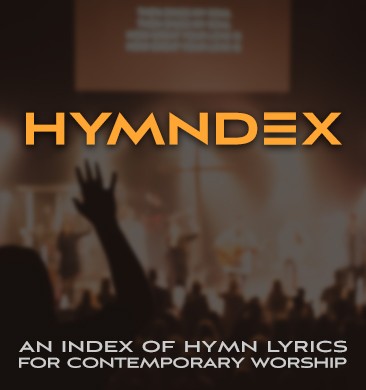New to leading worship? Feeling overwhelmed about where to start? You’re not alone. Many worship leaders begin their journey wondering how to structure a service that truly serves their congregation.
An order of worship service maps out your church’s service from beginning to end. Your team gets a clear roadmap. No more awkward pauses between songs or confused moments when nobody knows what comes next. Good structure creates breathing room for worship to happen naturally while keeping everyone focused on serving God with intention.
Need a Sunday worship template you can use every week? This guide breaks down each service component, gives you a sample program, and shares tips for smooth transitions that keep people engaged.
What Makes Up a Worship Service
Articles here at Worshipideas.com help you flesh out every part of your worship planning, but here’s an overview of what your service order might include.
Worship services need more than songs and a sermon. Each piece has a job to do. When you plan thoughtfully, these elements connect to guide your church through genuine worship moments.
Here’s a look at the most common elements you’ll find in a Sunday worship order of service:
- Welcome and Announcements: This sets the tone for the gathering and helps everyone feel grounded. A friendly welcome, maybe with a Scripture or short prayer, is often followed by quick announcements. Some churches open with them; others save them for later.
- Call to Worship: A Scripture reading or prepared statement that invites the congregation to shift their hearts and minds toward worship. It signals that the service is starting with a purpose. This moment helps establish the tone and reminds everyone why they’ve gathered.
- Hymns and Worship Songs: Singing unites the congregation and opens hearts. Most services begin with one or two songs. Some churches prefer traditional hymns, others lean into contemporary praise, and many use both – it all depends on your congregation! This part of the service draws people in and invites them to lift up God’s name together.
- Prayer: Prayer moments may include an invocation at the start, a pastoral prayer mid-service, or a corporate recitation of the Lord’s Prayer and/or creeds.
- Scripture Reading: This is often a selected passage tied to the sermon or chosen to stand on its own. Some churches have a lay reader share this, while others include it as part of the worship flow, sprinkled in between songs while a musician plays a soft underscore.
- Sermon or Message: This is typically the central teaching of the service. Delivered by the pastor, the sermon opens Scripture and applies it to daily life. It’s where Biblical truth meets practical guidance and often shapes the rest of the worship experience.
- Offering or Tithes: A time set aside for financial giving as part of worship. Some churches include a short Scripture on generosity, a prayer of thanks, or instrumental music. It reminds the congregation that giving is an act of faith and obedience.
- Communion or Lord’s Supper: Usually observed weekly or monthly, depending on the denomination. It often follows the sermon and offers space for reflection on Christ’s sacrifice. Many churches pair this with Scripture, prayer, or quiet worship as the elements are shared.
- Benediction: A closing blessing, typically taken from Scripture, that sends the congregation out with peace and purpose. Often delivered by the pastor, it brings the service to a thoughtful, worshipful close.
- Closing Song: A final song that ties together the message and prepares the congregation to leave encouraged. It may be a familiar chorus, a reprise from earlier, or a hymn that reinforces the day’s theme.
Creating Your Order of Worship Template
Now that you know what goes into a worship service, it’s time to build a structure that works for your church. A clear order of worship service template helps your team stay aligned and your congregation stay focused.
Here’s a sample outline you can start with:
- Welcome
- Call to Worship
- Hymn or Song
- Opening Prayer
- Scripture Reading
- Sermon
- Song of Response
- Offering
- Announcements
- Benediction
This basic program order of worship service sample gives a solid flow while allowing flexibility. You can add or adjust as needed, depending on your church’s style and format.
Customization Options
- Change the order: Some churches move announcements to the end or put the offering before the message. Others start with a high-energy praise set.
- Include special elements: Add solos, choirs, readings, or skits on special occasions.
- Adapt for events or holidays: Easter, Christmas, or baptisms often need slight changes. Keep a few versions on hand for these moments.
Tips for an Effective Worship Service
A clear order of worship service is helpful, but how you lead through it makes the real impact. These tips will help you shape a service that’s both organized and meaningful.
- Theme Consistency: If possible, make sure every part of the service supports the day’s message. Choose songs, Scripture, and prayers that connect to the sermon. When everything points in the same direction, the message lands stronger.
- Flow and Transition: Avoid awkward handoffs or long pauses. A short Scripture, instrumental moment, or spoken bridge can smooth the move from one part to the next. Transitions don’t have to be fancy; they just need to be intentional.
- Congregational Engagement: Look for ways to involve the people in the pews. Responsive readings, short testimonies, or prayer prompts can turn the service from a performance into shared worship. A few moments of participation go a long way.
- Time Management: Honor your schedule. Running long every week can wear out your team and your congregation. Keep an eye on the clock during planning and don’t be afraid to simplify when needed.
- Flexibility: Even with a plan, leave room for the Spirit to lead. If something changes at the last minute, a song runs long, or the sermon needs more space, adjust with grace and keep the focus on worship.
Final Thoughts
Planning your worship service well brings clarity and unity to your team and congregation. Structure gives your Sunday gathering a backbone while leaving room for God to work.
Take the sample template from this post and make it yours. Your church has its own personality and traditions. A regular Sunday looks different from Easter or a baptism service. Good planning keeps your message sharp and transitions smooth.
You’re not trying to box worship into rigid rules. You’re creating intentional space. When you have a solid plan, you can lead with confidence and open doors for real worship to happen week after week.








